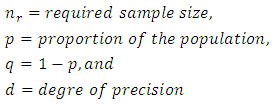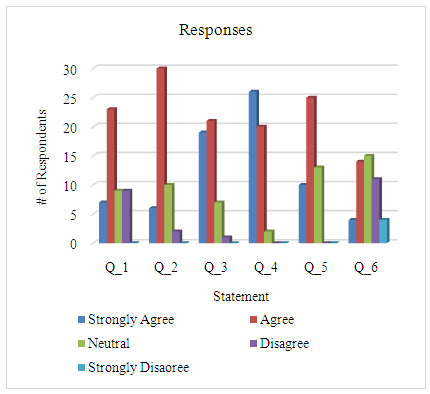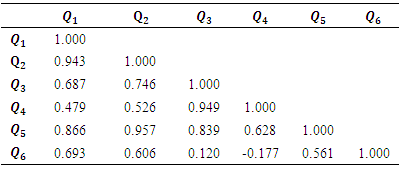-
Paper Information
- Paper Submission
-
Journal Information
- About This Journal
- Editorial Board
- Current Issue
- Archive
- Author Guidelines
- Contact Us
Science and Technology
p-ISSN: 2163-2669 e-ISSN: 2163-2677
2017; 7(4): 89-93
doi:10.5923/j.scit.20170704.01

Telecommunication Tower Sharing Effects on Network Providers in Zambia
Lusungu Chihana, Dani Banda
Department of Electrical and Electronic Engineering, University of Zambia, Lusaka, Zambia
Correspondence to: Lusungu Chihana, Department of Electrical and Electronic Engineering, University of Zambia, Lusaka, Zambia.
| Email: |  |
Copyright © 2017 Scientific & Academic Publishing. All Rights Reserved.
This work is licensed under the Creative Commons Attribution International License (CC BY).
http://creativecommons.org/licenses/by/4.0/

Tower sharing has become the norm among telecommunication companies in developed countries, and now in developing countries in Sothern Africa. Zambia’s mobile operators; Airtel, MTN, and Zambia Telecommunications Ltd (Zamtel) recently adopted this business model. The sharing of infrastructure has led to a number of effects which this paper seeks to outline. The paper utilized a quantitative research approach to explore the effects of tower sharing on telecommunication market and technology advancement among mobile operators. The research was conducted using questionnaires and face interviews. Data collected was analyzed using Excel. The research found that there is positive correlation between infrastructure sharing and the rate at which new technology is adopted among network providers sharing infrastructure. Thus, affecting service quality and pricing.
Keywords: Tower Sharing, Passive Infrastructure, Sharing Models, Telecommunication Companies, Mobile Network Operators
Cite this paper: Lusungu Chihana, Dani Banda, Telecommunication Tower Sharing Effects on Network Providers in Zambia, Science and Technology, Vol. 7 No. 4, 2017, pp. 89-93. doi: 10.5923/j.scit.20170704.01.
Article Outline
1. Introduction
- The traditional mobile network operators (MNOs) in Zambia provide three services; voice call, short message, and data services [1]. To roll out these services, MNOs require telecommunication towers that can house the essential equipment required for communication such as antennae and base stations. As the number of service providers increased, the need to expand services also increased, which meant building more towers to accommodate the growth. This resulted in having an infrastructure based competition among MNOs aimed at growing service coverage in all parts of the country [2]. Inevitably, each network provider established their network offering nationwide coverage. However, the focus today has shifted to the provision of new innovative mobile services such as broadband, and fourth generation (4G) mobile ultra-broadband internet access that satisfies the high-speed data demand [3]. [4] advises that data traffic is on the highest rise which is leading to the construction of smaller cell sites and more in-building solutions, therefore, it is unlikely that the growth of towers will reduce any time soon. This in turn demands an increase in investment in the deployment of broadband services to serve the consumers and upgrades at each tower site. According to [5], there has been minimal growth in revenue among MNOs. The result of this has seen some MNOs offloading towers to tower companies and then leasing space on them [6]. Tower companies are then allowing the network providers to share towers passively allowing the MNOs to concentrate on their core business such as innovative delivery of services in demand on the market.
1.1. Problem Statement
- Despite tower sharing endorsement by the regulator, the effects and adoption styles by the network providers remains something of interest to the nation’s economic interest and advancement of innovative technological adoption.
1.2. Research Objectives
- 1. To determine the effects of tower sharing in Zambia.
1.3. Research Questions
- 1. What is the effect of tower sharing on adoption of advanced technology among MNO’s?2. What is the effect of tower sharing adoption on the MNOs?
2. Literature Review
- Infrastructure sharing is grouped into two categories; active, and passive infrastructure sharing [3, 5]. Active infrastructure sharing involves the designing of complex algorithms and sophisticated forms of collaboration among operators to facilitate network sharing [7]. Electronic equipment involved in active infrastructure include; backhaul, microwave radio equipment, antennas, switches, feeder cables, and other electronic infrastructure [8].Passive infrastructure sharing involves the “non-intelligent” portions such as land, mast, and power supply [7]. When infrastructure is shared passively, network operators share a common site to host the transmission equipment such as the Base Transceiver Station (BTS), power supply, and air conditioning equipment [8]. Developed countries such as the United States and Germany have a system where the MNOs can share both passively and actively [7]. Developing countries such as India, Nepal, and Zambia have recently adopted these business models where they share passive infrastructure. The respective regulatory bodies aim for this approach is to ensure there is cooperation and competition among mobile operators existing in these countries [8, 9], and [6]. Furthermore, many countries and their regulators encourage passive sharing because it presents more lasting and practical implementation advantages such as the exclusion of complex algorithms [2]. In India, the telecom market allowed sharing of infrastructure and saw the following effects; it allowed the operators to considerably reduce costs, allowed them to “focus on core marketing activities, as well as allowed new operators to roll out network in record time” [4]. Zambia has a governance framework concerning telecommunications; however, they are embarking on a new level of control never experienced. The regulatory body, Zambia Information Communication Authority (ZICTA), has active policies and regulatory standards that govern all this activity.“Lack of an infrastructure-sharing culture in the country is a hindrance to the dispersion of services, and contributes to the high prices that consumers have to pay to access telecom services” [8].These types of sharing models depend on the maturity of the market – whether there’s understanding between the telcos involved, legal and regulatory framework as outlined by the regulator present within the country, telecom market conditions, and network symmetry [10]. The advancement of technology on a telecommunication market shows the levels of maturity among the service providers. It provides a level of understanding that exists between one provider and the other, this is critical in any technological adoption when two operators are sharing towers. The number of integrations that are required involves utilization of technology that can communicate with two different systems. As systems get updated when new and better systems are released, service providers must ensure they have compatible systems that can transmit and allow communication effectively between each other. However, the adoption of advanced technology comes after the service providers have realized the competitors have the technology. Thus, we derive our hypotheses: Infrastructure sharing influences technological advancement among mobile network operators.[8] working paper suggest that passive infrastructure sharing has the following benefits; reduction of capital and operation expenses by 40 – 60%, allowing the service providers to free up management time and allocate them to their core business and marketing, and improve quality of service. Other research has shown that the more the network providers existing in the country the quicker it is for them to adopt tower sharing [11]. According to [12], customer growth and MNO growth in a country depends enhanced infrastructure and increased value-added services (VAS) respectively. Since Zambia has had the same number of MNOs for the past 10 years, it is concluded that there has been no change in service provision.
3. Methodology
- Sources of data were both primary and secondary. Information was obtained for the original research through first-hand interviews, experiments, surveys, and questionnaires. Quantitative research allows for data to be gathered numerically and can be grouped therefore making analysis easy. This method was used for the following reasons;Ÿ Structured research design can be imposed on the research being conducted, Ÿ Researcher was not part of what was being observed, and did not bring personal interests, values, or biases to the research, Ÿ It is easier to use quantitative data to explain a complex phenomenon.Sample SizeThe calculation of the sample size utilized the formulae given by [13]. The aim was to get sample size with confidence level of 90%. The formulae used is;
 Where;
Where; The proportion of the population
The proportion of the population  may be known from prior research or other sources; if it is unknown use
may be known from prior research or other sources; if it is unknown use  = 0.5 which assumes maximum heterogeneity (i.e. a 50/50 split). The degree of precision
= 0.5 which assumes maximum heterogeneity (i.e. a 50/50 split). The degree of precision  is the margin of error that is acceptable. Since
is the margin of error that is acceptable. Since  is unknown, [13] recommends
is unknown, [13] recommends  = 0.5, and the value of
= 0.5, and the value of  is = 1-
is = 1- ,
,  is to 90% accuracy, therefore, applying the formulae;
is to 90% accuracy, therefore, applying the formulae; A five level Likert scale was used to evaluate the level of agreement or disagreement with weights ranging from 1-5 to evaluate the level of agreement or disagreement (strongly disagree 5, disagree 4, neutral 3, agree 2, and strongly agree 1). The collected data was checked for completeness, coded, captured and analyzed through Microsoft Excel. Descriptive statistics used included tables, frequencies, weighted mean, standard deviations, and percentages. Pearson correlation coefficient, r, was used to determine the strength of the relationship between the variables in question.
A five level Likert scale was used to evaluate the level of agreement or disagreement with weights ranging from 1-5 to evaluate the level of agreement or disagreement (strongly disagree 5, disagree 4, neutral 3, agree 2, and strongly agree 1). The collected data was checked for completeness, coded, captured and analyzed through Microsoft Excel. Descriptive statistics used included tables, frequencies, weighted mean, standard deviations, and percentages. Pearson correlation coefficient, r, was used to determine the strength of the relationship between the variables in question.4. Data Analysis
- Response RateData was collected from the mobile operators present in Zambia; Airtel, MTN, and Zamtel and one tower operator IHS Towers. 62 total responses were obtained, 14 were insufficiently completed, leaving 48 valid responses representing 48% of the sample size. Two management executives from IHS Towers, MTN and Zamtel were interviewed, these oversaw the decision-making process of infrastructure sharing.Figure 1 shows the responses received. These show the level agreements using the Likert scale as outlined in the methodology.
 | Figure 1. Response Rate for Each Statement in Table 1 |
|
|
|
 These variables, show that there is a positive correlation as the value of r for each statement is to +1. Stiff competition among the current mobile operators forces operators to adopt infrastructure sharing is correlated with current infrastructure set up as the major influencer in the telecom industry today. This shows there’s a positive correlation between competition and current ICT infrastructure and their decision to adopt infrastructure sharing.
These variables, show that there is a positive correlation as the value of r for each statement is to +1. Stiff competition among the current mobile operators forces operators to adopt infrastructure sharing is correlated with current infrastructure set up as the major influencer in the telecom industry today. This shows there’s a positive correlation between competition and current ICT infrastructure and their decision to adopt infrastructure sharing.  The statements; Ÿ Infrastructure set up currently present on the Information Communication Technology (ICT) market has an influence on tower sharing among MNOs, and Ÿ Infrastructure sharing promotes cooperation among network providers;were found to be positively correlated. It was also found that the main reason for the telecom regulators to give tower sharing a go ahead in Zambia was to promote cooperation and competition. This hypothesis result proves that ZICTAs’ goals are indeed achieved.
The statements; Ÿ Infrastructure set up currently present on the Information Communication Technology (ICT) market has an influence on tower sharing among MNOs, and Ÿ Infrastructure sharing promotes cooperation among network providers;were found to be positively correlated. It was also found that the main reason for the telecom regulators to give tower sharing a go ahead in Zambia was to promote cooperation and competition. This hypothesis result proves that ZICTAs’ goals are indeed achieved.  It was found that there’s a positive correlation between the MNOs view that the adoption of new technologies helps in reducing capital and operational expenses and their view that investing in new technologies is a competitive advantage for them. As towers are shared, each operator benefits from the others adoption of new technologies. This in turn reduces capital expenditure and operational costs.The following statements show no correlation as the value of r is close to 0;
It was found that there’s a positive correlation between the MNOs view that the adoption of new technologies helps in reducing capital and operational expenses and their view that investing in new technologies is a competitive advantage for them. As towers are shared, each operator benefits from the others adoption of new technologies. This in turn reduces capital expenditure and operational costs.The following statements show no correlation as the value of r is close to 0; The analysis shows that even though stiff competition among operators forces them to adopt tower sharing, it is not correlated to the adoption of new technologies as a competitive advantage. However, it is positively correlated with reduction of capital and operational expenditures. Secondly, adoption of new technologies by any mobile operator as a way of reducing capital expenditure is not correlated with hindrance of competition based on tower sharing as it may reduce control and interdependence. This may mean or may not mean that adoption of new technologies and increased control and dependence due to sharing are positively correlated. Thirdly, operator’s decision to invest in new technologies as a competitive advantage is not correlated with their view of sharing as being a hindrance to competition due to reduced control and interdependence. Adopting new technologies have no correlation with control and independence among the mobile operators.Any value of r above 0.50 is considered a large effect. Therefore, the results found in the analysis show that there is large effect between infrastructure sharing and the following;Ÿ Adoption of new technologies,Ÿ Competition and cooperation among mobile operators,Ÿ Reduction of capital operational expenditure.
The analysis shows that even though stiff competition among operators forces them to adopt tower sharing, it is not correlated to the adoption of new technologies as a competitive advantage. However, it is positively correlated with reduction of capital and operational expenditures. Secondly, adoption of new technologies by any mobile operator as a way of reducing capital expenditure is not correlated with hindrance of competition based on tower sharing as it may reduce control and interdependence. This may mean or may not mean that adoption of new technologies and increased control and dependence due to sharing are positively correlated. Thirdly, operator’s decision to invest in new technologies as a competitive advantage is not correlated with their view of sharing as being a hindrance to competition due to reduced control and interdependence. Adopting new technologies have no correlation with control and independence among the mobile operators.Any value of r above 0.50 is considered a large effect. Therefore, the results found in the analysis show that there is large effect between infrastructure sharing and the following;Ÿ Adoption of new technologies,Ÿ Competition and cooperation among mobile operators,Ÿ Reduction of capital operational expenditure.5. Discussion
- Zambian telecom industry is a growing market; therefore, tower sharing makes it suitable for mobile operators to roll out their services quicker and meet the current market demand. As competition increases so does cooperation between the operators. The results show that infrastructure sharing is the best system to use to avoid duplication of infrastructure, reduce capital and operational expenses, and increase levels of technological advancement in the country agreeing with some of the findings in research done by [8] and [6].Before infrastructure sharing was introduced in Zambia, it was common to find similar masts belonging to the three network providers in one area. However, the concept of sharing infrastructure has changed this dynamic and has reduced the number of towers found in an area. This has had positive effects on the telcos such as reduction of operational cost to maintain these sites. The value saved from this is invested into new technologies and other innovative ventures that are used to serve the customers better. Furthermore, as telcos share infrastructure they tend to get better, high performing and efficient technology to run their systems. This adoption of new and better technology frequently resent a few benefits to both the telco and the consumers. New technology means better tools used to serve the customers. If customers are kept satisfied, it is very likely the company will observe growth in number of subscribers. An increase in this regard affects sales and profits positively. However, the tower sharing model business model adopted in Zambia, used by all MNO’s, only allows passive infrastructure to be shared, while active infrastructure is never shared, and transmission equipment are mounted individually for each MNO. This means that there is still the issue of duplication of active infrastructure. The cost of acquiring equipment required to install at a tower site for each operator e.g. radios, does not reduce by a big margin as it would if the active infrastructure were shared as well.
6. Conclusions
- Based on the research findings on tower sharing in Zambia, this paper gives details on the current effects of tower sharing with reference to the set objectives.The research found that tower sharing has the following effects in Zambia; Ÿ Less duplication of resources such as infrastructure and maintenance systems. Towers are no longer near each other as MNO’s all place their transmission equipment’s on one tower. Ÿ Improved technological adoption by MNOs as they look to improve service quality, and expand services to non-serviced areas. Ÿ Improved competition and cooperation among the network providers. Competition is no longer infrastructure based but through innovative services and pricing offered to retain the customer base. Cooperation is improved as the MNO’s adopt new technology and each service provider must ensure their systems are up to date to run on the current technology offered by the tower providers. They work hand in hand to ensure they’re working at the same pace to avoid each other’s systems interfering the other because of non-compatibility. Ÿ Improved service quality as new technology means better quality of services provided, Ÿ Reduced capital and operation expenses; as infrastructure is shared, However, some countries experience different effects depending on the level of sharing models adopted. In Zambia, mostly tower sites and towers are shared, living active infrastructure implementation to be maintained by the network operator. Even though there are less towers in an area, there’s still duplication of transmission equipment.
Data Definitions
- ICT - Information Communications TechnologyZICTA - Zambia Information Communications Authority. The Zambian ICT regulator.OPEX -Operational ExpenditureCAPEX - Capital ExpenditureSMS -Short Message ServiceTeleco - Telecommunication CompanyMNO -Mobile Network OperatorBTS -Base Transceiver StationGSM -Global System for Mobile communicationZAMTEL -Zambia Telecommunications
 Abstract
Abstract Reference
Reference Full-Text PDF
Full-Text PDF Full-text HTML
Full-text HTML

